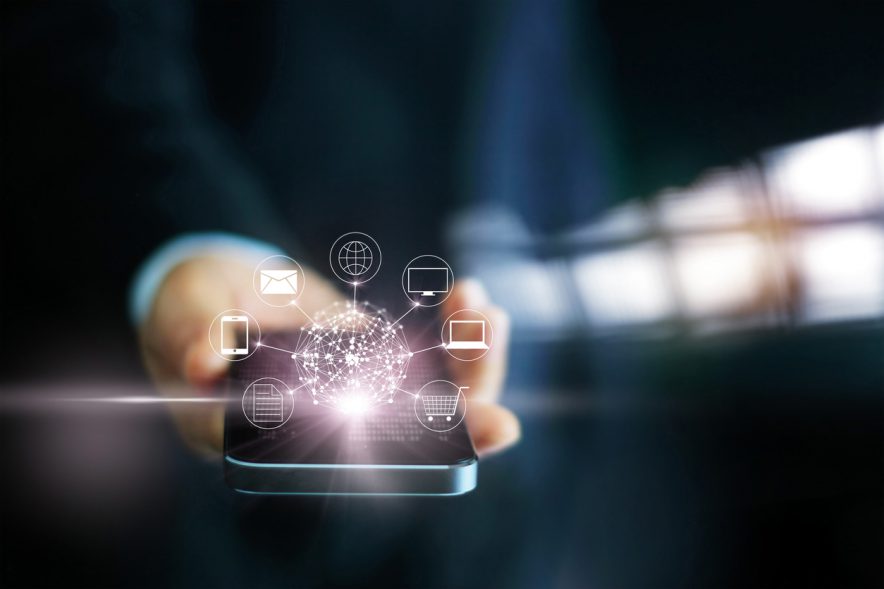
What Is The Future Of Mobile Payments?
Brands like Apple, Google and Samsung have been instrumental in accelerating the growth of the mobile payments market. And as the smart phone continues to be adopted in considerable volume, several analysts are predicting that although they have got off to a slow start, the use of mobile payments is likely to turn a corner in the future.
Recent figures show that the use of mobile payments is indeed on the rise – but they’re not on the verge to take over just yet. However, their uptake is set to change as some of the problems causing the slow take up are likely to be addressed, and accessibility to mobile payments improves, but what is holding them back now?
Why Are Consumers Reluctant to Switch to Mobile Payments?
Bryan Yeager, an analyst for eMarketer, lists a variety of reasons why mobile payments aren’t being used in greater volume yet, including security concerns and limited merchant acceptance. However, others say there has been a lack of awareness over mobile payments and they don’t always offer value added services. Moreover, the sector has found itself lacking when it comes to loyalty programs and incentivizing consumers to make the leap to mobile payments
Another major issue has been the lack of awareness among consumers, however, research shows that this is gradually improving.
According to the Accenture 2016 North America Consumer Digital Payments Survey, awareness of mobile payments has increased by 4 percent, with most consumers surveyed aware of mobile payments, However, this hasn’t fuelled their use, leaving cash and credit cards to maintain their position as the favored form of payments among consumers.
Commenting on the research, Robert Flynn of Accenture said:
“We are seeing a gradual increase in consumer awareness of mobile phone payments options; however, adoption has remained flat over the past few years,”
… To shift consumers’ payment behaviors will take more than just providing another ‘me too’ mobile payments option; leading merchants will identify and provide next-generation, value-added services.”
Awareness is also expected to improve as corporations are making an increased effort to engage consumers and encourage them to use mobile payments. For instance, MasterCard has launched its digital wallet, Masterpass, and it recently announced the Digital Vendor Directory, which lists all of the merchants where Masterpass is accepted.
However, although the sector has encountered is problems, mobile payments are still expected to grow. According to Forrester’s Mobile Payments Forecast 2016-2021, mobile payments in the EU-7 will be worth $148 billion in 2021 – up from $52 billion in 2015. Forrester also predict that in-person mobile payments will grow the quickest, while remote mobile payments will make up two thirds of mobile payments by 2021.
The use of mobile payment apps are also seeing considerable growth in the U.S. and U.K., while China’s fintech infrastructure has allowed mobile payments to take off in considerable volumes compared with other countries.
And as the barriers to mobile payments are removed, they will be adopted more widely and they will naturally evolve. As time moves on, consumers are likely to see:
Reduced Fragmentation & Improved Accessibility
Fragmentation is a further issue that has been identified as holding mobile payments back from their full potential; this problem was identified some time ago in a report by the Federal Reserve. As banktech.com explains, in the report, the bank acknowledged that mobile payments were a ‘permanent fixture in the payments system, but called for greater collaboration and increased open access to drive the use of them forward. However, even now the problems of fragmentation remain.
Another reason for the slow take up is the reluctance of merchants to accept mobile payments as they don’t always understand the value they offer. Because of this, merchants are reluctant to invest in new equipment or upgrade their terminals.
More Rewards & Discounts for Using Mobile Payments
Lack of loyalty/reward schemes are quite common among mobile payments, yet this is something shoppers are keen to see. According to 451 Research LLC, 45 percent of those interviewed wanted access to special offers/loyalty rewards.
Euromonitor suggests ‘loyalty could be a key driver’ when it comes to mobile payments, and a survey of 6,000 shoppers carried out by the Collinson Group shows that 23 percent of those surveyed already use their smart phones to download digital vouchers.
In a further survey, this time involving UK consumers, the idea of using loyalty programs with mobile wallets is already popular among shoppers, with 60 percent of the 2,000 interviewed stating they had used a loyalty program, and 67 percent saying that they wanted to.
Wearables Evolving
As mobile payments evolve, wearables will become available to more consumers. Several high profile companies have already make an effort to get ahead of this trend by introducing watches, such as the Apple iWatch, which allows contactless payments, and the fitness app Jawbone lets consumers make payments via American Express.
Wearables currently make up a small part of the mobile payments sector, however, it should be noted that wearables – especially in the payments industry – are still in their relatively early stages.
The percentage of users is expected to grow considerably by 2020. By then, mobile payments are predicted to be worth $501.1 billion worldwide and account for 20 percent of mobile payments, compared with just $3.1 billion in 2015.
Commenting in the Tractica Wearable Payments report
Aditya Kaul, research director for Tractica, said: “Wearable payments are just getting started.”
…Key early market initiatives include trials and deployments of Barclays’ bPay system in the United Kingdom, Swatch’s partnership with UnionPay to enable wearable payments, Alipay’s partnership with Xiaomi in China, and Disney’s successful deployment of its MagicBand closed-loop payment and ticketing system at its theme parks, among others.”
In a further report, the 2016 Gartner Personal Technologies Study stated wearables are in their ‘early adopter’ stage. The report highlighted several issues that could be contributing to the limited take up of wearables, such as the high prices of products like smart watches. Gartner also suggests wearables need to be ‘more useful’ before they will be accepted by a broader group of consumers.
However, wearables are set to come more accessible as more companies join the market. With new start-ups and innovations attempting to attract consumers, wearables will become more cost effective; this is likely to make the wearables sector more competitive as reduced pricing would make them more accessible to consumers.
Nevertheless, the Gartner report also notes that start-ups in this area find it difficult to stand out and get noticed, which is another factor that could explain the current reluctance to buy wearables.
Moreover, it is agreed by several industry analysts that wearables will have to offer more if they are going to be brought in greater volumes.
Forecasts show that payment functionality will be included in 62% of wearable device shipments by 2020, but Gartner warns that wearables will need to be multi-functional and not just focus on payments.
However, another issue detailed in the report was the relatively high rate of early abandonment with smart watches, which according to Gartner’s 2016 report stood at 20 percent.
Security Improvements
If mobile payments are to truly succeed and become mainstream, further efforts need to be made to address both retailers and consumers’ security fears.
Perception over the lack of security is an aspect that consumers consistently raise in research, and it one of the major barriers to the expansion of mobile payments; these concerns have been detailed in several surveys and numerous articles have pointed out the possible security flaws in this payment method. A data breach would also have a serious impact on consumers’ trust in mobile payments.
Research shows that 88 percent would stop using mobile payments if a data breach led to them losing money or becoming victim of another crime. However, with greater security measures, some of these worries can be put to rest.
The use of biometrics is one such measure that might allay security fears. Biometrics are already a feature of mobile wallets like Apple Pay, and the Juniper Research Human Interface & Biometric Technologies: Emerging Ecosystems, Opportunities & Forecasts 2014-2019 report states that by 2019, nearly 800 million biometric authentication apps will be downloaded every year – a dramatic increase from the estimated 6 million a year downloads of a few years ago.
There will also be greater use of tokenization. Visa and MasterCard have already teamed up to increase the role out of tokenization, and Multi-factor authentication is likely to be used more often as corporations realize that passwords don’t always do enough to protect sensitive credentials.
More Retailers Accepting Mobile Payments
More retailers are realizing that there is a larger demand for mobile payments from consumers and they have been taking steps to meet this. As an example, quick serve restaurants are among those who have already introduced company branded apps, which provide consumers with a simple way to order and pay.
Starbucks, Taco Bell, Domino’s and Pizza Hut are among the major retailers that now use mobile apps, and their introduction has been associated with an increase in sales when used by these companies.
However, it is the Starbucks app that has been one of the biggest success stories, and mobile sales now make up 21 percent of the coffee chain’s transactions. Because of its success, Starbucks now plan to take it further, with personalization features to improve engagement and to further boost sales.
Further, stores like Wal-Mart are utilizing apps so they can compete with the likes of Amazon. The Walmart Pay app was launched in December 2015 and aims to make the checkout process frictionless, as well as providing a straight forward method of paying and ordering online to let consumers pick up orders at its stores; these services provide a better customer experience, which could encourage consumers to keep going back to Walmart.
These are just some examples of how own brand mobile apps are being used to boost sales and enhance customer service, while also helping the stores to stay competitive.
In addition, as consumer demand grows, even more retailers will have to consider taking mobile payments, and making them available via multiple channels. A 2016 study entitled Mobile Pay and Commerce Advisory Report from 451 Research LLC shows how the ‘early adopters’ don’t just want to use mobile payments in store, they want omnichannel access so they can make payments wherever they go.
A further survey, again from 451 Research LLC, shows increased interest in mobile payments among North American consumers. 29 percent of smartphone users said they intended to use mobile payments at some point.
In the future, store brand apps – and mobile payments in general – are likely to become more of a feature in both larger chain stores and smaller businesses as they make efforts to outperform the competition and give consumers the easy in-store experience that they are looking for.
Conclusion
For a long time, mobile payments have been tipped as the next big thing, and mobile commerce is expected to dominate over ecommerce at some point in the future.
Mobile payments have indeed been growing in popularity – especially under certain demographics like millennials – but they haven’t grown quite as quickly as some might have imagined – at least not yet.
Nevertheless, analysts and experts all see a bright future for mobile payments, especially as consumers crave quicker ways to make payments. But there are many obstacles that need to be overcome before mobile payments can reach their full potential, and the industry realizes this.
Loyalty programs are being introduced to help win customers over; you’ll likely to see more of these in the future. And retailers like Starbucks have taken the lead with mobile apps, making mobile payments more accessible.
In addition, over time, many of the security concerns limiting the growth of mobile payments will be tackled. For instance, more security measures like biometrics could help to allay consumers/retailers worries over security, which consumers often cite as their most pressing concern.
Ready to get started?
Get in touch or create an account





